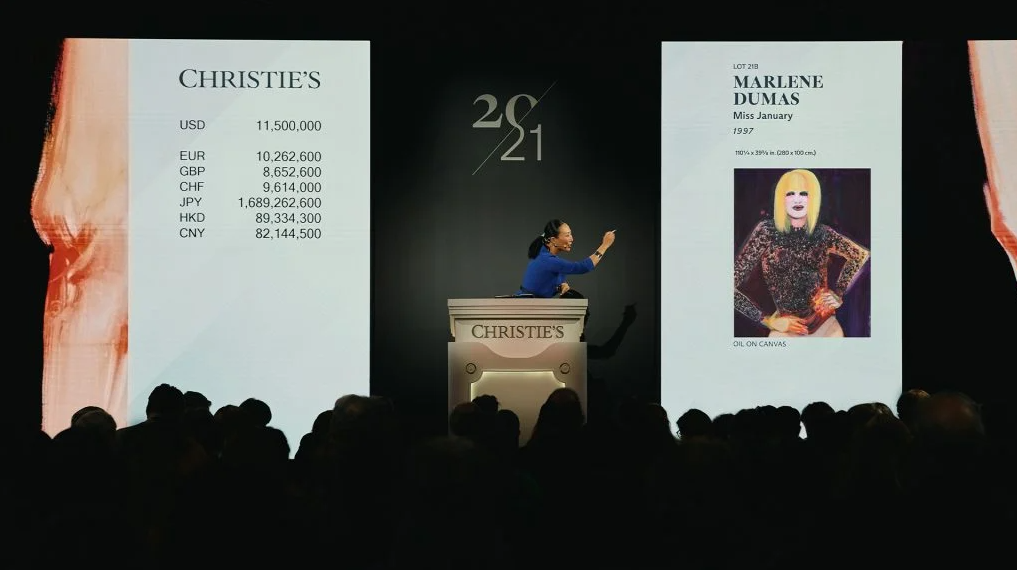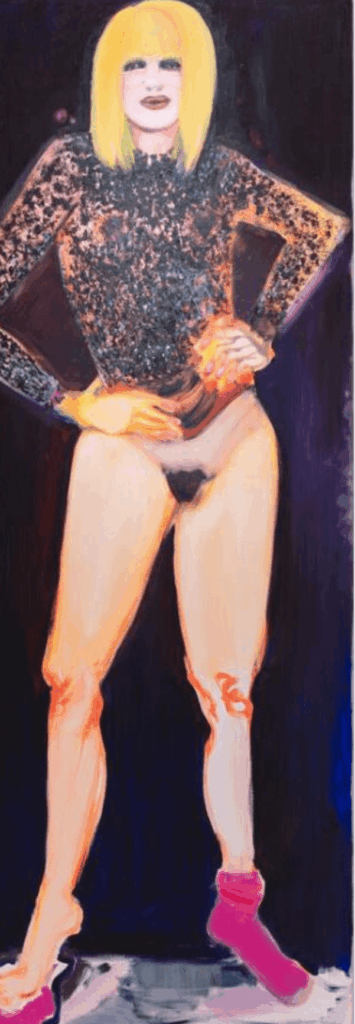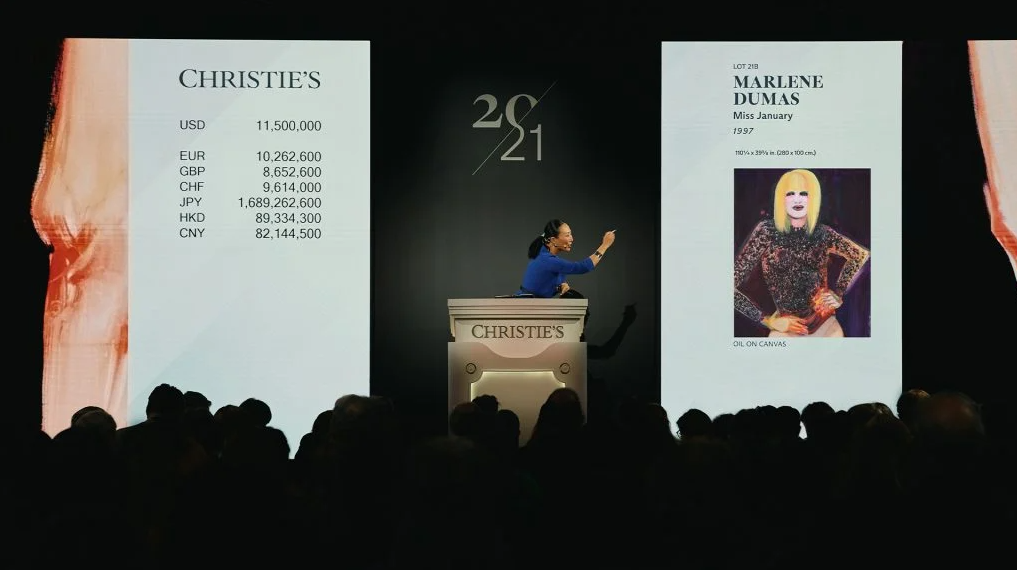South African artist Marlene Dumas has set a groundbreaking record, selling her painting Miss January for an astounding R245 million ($13.6 million) at a recent Christie’s auction in New York.
The record-breaking sales of Miss January, however, mark a positive turning point and a long-overdue move toward properly recognizing the accomplishments of exceptional female artists on the global stage. Miss January, painted by Dumas in 1997, revisits themes first explored in her earlier work Miss World, which she created at just 10 years old. The piece, which challenges traditional ideas of beauty and feminine representation, is more than 2.8 meters tall and depicts a solitary, vulnerable woman taken from an erotic magazine.
Miss January was first displayed in Dumas’ 1998 Miss World exhibition in Amsterdam. She then spent years in the esteemed Rubell family collection, which is known for promoting artists from the Global South and Africa. Its remarkable past has increased its allure, since it has been extensively displayed in museums across the globe.
Sara Friedlander, Deputy Chairman, Post-War and Contemporary Art, Christie’s, remarks: “Through its monumental scale and singular subject matter, Miss January is truly the magnum opus of Marlene Dumas. In this painting, Dumas triumphantly demonstrates a formal mastery of the woman’s body while simultaneously freeing it from a tradition of subjection, upending normalized concepts of the female nude through the lens of a male-centric history. ”

Dumas is known for her emotionally charged, psychologically complex portraits—often based on found photographs—which explore themes of sexuality, race, grief, motherhood, and the body. She investigates exposure versus concealment, with a practice that balances the tendency to reveal and the inclination to conceal. Painted in 1997, Miss January shows Dumas revisiting her very first known drawing, Miss World, executed thirty years earlier when she was just ten years old. Depicting ten idealized forms of glamorous models, the work was a clear foreshadowing of the artist’s lifelong fascination with the female figure. The title also heralds to Dumas’ first survey exhibition, Miss Interpreted, which took place at the Stedelijk in 1992, as well as her 1988 painting Misinterpreted, often considered a self-portrait.

Courtesy of the artist, Marlene Dumas and Frith Street Gallery, London. Photography by Chanté Schatz, Wits University
Dumas, who was born in Cape Town and grew up in Kuils River, studied at the Michaelis School of Fine Art at the University of Cape Town before moving to Amsterdam in 1976. Known for exploring complex subjects such as identity, sexuality, and politics, her emotionally intense style quickly brought her international recognition.
Represented in major museums worldwide—from The Museum of Modern Art in New York to London’s Tate—Dumas has earned numerous prestigious awards, including the Johannes Vermeer Award in 2012. Today, she remains one of the Netherlands’ most prolific and respected artists, continually pushing boundaries with her profound and provocative artworks.
Even with Dumas’ extraordinary success, there are still large gender gaps in the art market. For example, Jeff Koons set the record for a living male artist with an incredible $90.3 million at the same auction, while Jean-Michel Basquiat’s 1982 painting, Baby Boom, brought $23.4 million. The 2022 BBC show Recalculating Art emphasizes this discrepancy even more by demonstrating that women’s artwork often sells for around 10% less than men’s.
The record-breaking sales of Miss January, however, mark a positive turning point and a long-overdue move toward properly recognizing the accomplishments of exceptional female artists on the global stage.

Marlene Dumas, Miss January (1997). Courtesy Christie’s Images Ltd. 2025.

